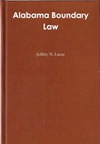All Articles
Accident Investigation & Reconstruction
Foot / Ankle Surgery
Addiction Issues & Substance Abuse
Forensic Analysis
Alcohol, Tobacco & Other Drugs
Forgery & Fraud
Anger Management & Related Issues
Healthcare
Appraisal & Valuation
Human Resources
Architecture
HVAC - Heating, Ventilation, Air Conditioning
Arms - Guns - Weapons
Industrial Hygiene and Safety
Artificial Intelligence (AI) / Machine Learning (ML)
Insurance Coverage Analysis
Branding - Brand Management
Jails - Prisons - Correctional Facilities
Business Management
Law Enforcement
Child Witch Phenomenon
Legal Issues
Corrosion
Medical Malpractice
Cosmetology: Hair / Makeup
Medical Records Review
Crime Scene Investigation
Meditation
Dental - Dentistry
Neuropsychology
Digital / Crypto Currency
Oil & Gas
Documentation Examination & Analysis
OSHA
Domestic Violence
Police Practices & Procedures
Dram Shop Liability
Pools and Spas (Recreational)
Employment
Product Liability
Energy - Utilities
Search Engine Optimization (SEO)
Eyewitness Testimony
Spirituality
Feng Shui
Supply Chain Management
Finance
Telecommunication
Food & Beverage
Toxicology
More...

COVERAGE-ANALYSIS-PAGE ARTICLES MAIN PAGE
. Contact Us if you are interested in having your work published on our website and linked to your Profile(s).
All Articles
Accident Prevention & Safety
Foreign Affairs - Geopolitics
Accounting
Forensic Psychiatry
Alternative Dispute Resolution (ADR)
Hazardous Materials
Anger Management & Related Issues
Human Factors
Animals
Insurance
Archaeology - Archeology
Land Use
Arms - Guns - Weapons
Linguistics
Attorney Fees
Machinery
Audio Forensics
Medical Malpractice
Bacteria - Fungus - Mold Investigation
Obstetrics - Gynecology (OBGYN)
Banking
Patents
Boating
Pharmaceuticals
Business Consulting
Plants & Trees
Chemical Industry
Police Practices & Procedures
Computers
Product Liability
Corrosion
Psychiatry
Counseling
Psychology
Criminology
Radiology
Damages
Search Engine Optimization (SEO)
Dental - Dentistry
Securities
Digital Forensics
Slip, Trip & Fall
Discovery & Electronic Discovery
Supply Chain Management
Engines (Combustion - Diesel)
Taxation
Enterprise Resource Planning (ERP)
Toxicology
Expert Witnessing
Underwriting
More...
Featured Articles
There are no active articles here at this time. Please use the search bar, try another category, or contact us if you would like to contribute an article.
This Article is unavailable. Contact Us
Search articles by title, description, author etc.
Sort Featured Articles
Featured resources
The Complete Guide to Public Safety...
by Kirby Beck (co-author & contributor)
Alabama Boundary Law
by Jeffrey Lucas
Litigation Services Handbook : The...
by Roman L. Weil (Editor), et al
Follow us










